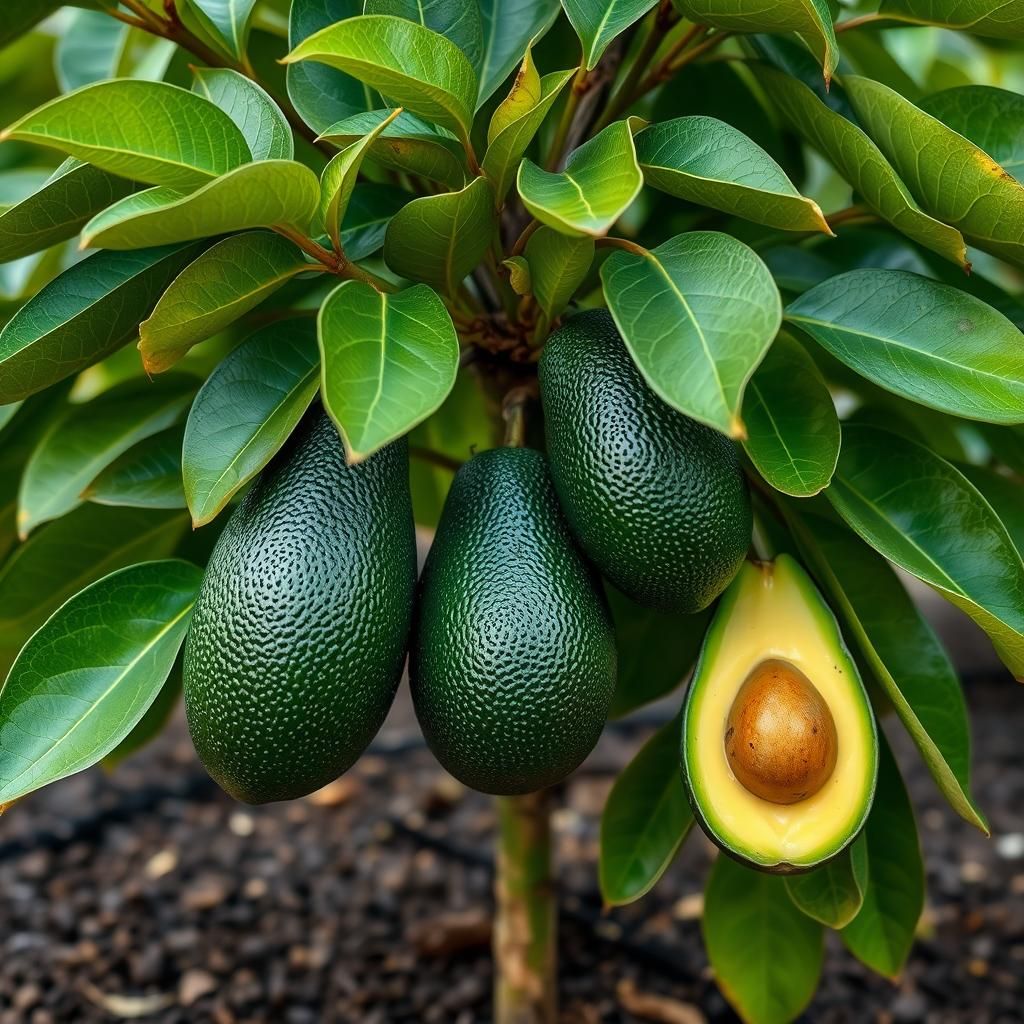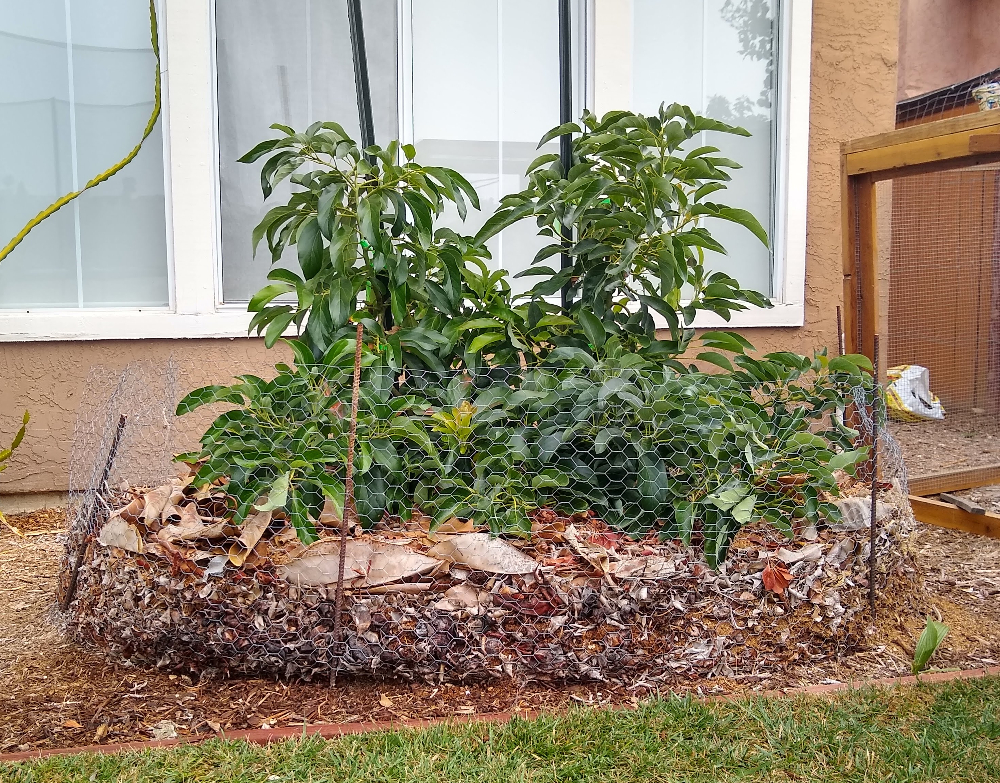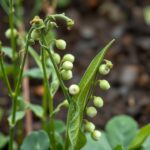Complete Guide: How Do You Plant Avocado Trees for Maximum Growth

Avocado trees are a rewarding addition to any garden, offering not only delicious fruit but also aesthetic appeal. However, cultivating these trees for maximum growth requires specific knowledge and techniques. This complete guide will walk you through the essential steps to successfully plant avocado trees, from selecting the right variety to understanding ideal soil conditions, watering practices, and sunlight requirements. Whether you're a seasoned gardener or a novice, following these expert tips will help ensure your avocado trees thrive and produce bountiful harvests year after year. Let's delve into the best practices for planting and nurturing these fruitful gems.
Steps to Successfully Plant Avocado Trees
To successfully plant avocado trees, begin by choosing a well-drained location with full sunlight. The ideal planting time is in the spring when soil temperatures are warmer. Start by digging a hole approximately 2-3 times the width of the root ball and just as deep. This allows ample room for the roots to spread. Incorporate organic matter or compost into the soil to improve nutrients and aeration. After placing the tree in the hole, backfill it gently, ensuring that the root crown is level with the ground surface. Water the tree well after planting and apply a layer of mulch to retain moisture and suppress weeds.
Choosing the Right Location
When selecting the location for your avocado tree, ensure it receives at least 6 hours of direct sunlight each day. Avoid areas prone to flooding or standing water, as avocados prefer well-drained soils. Additionally, consider the proximity to other trees, as avocado trees require air circulation to prevent fungal diseases. A south-facing slope is optimal for warmth and sunlight exposure. Finally, observe any harsh winds which can damage young trees; planting near a natural windbreak can be beneficial.
Soil Requirements
Avocado trees thrive in well-drained, sandy loam soils with a pH range of 6 to 6.8. Heavy clay soils can retain too much moisture, leading to root rot. Conduct a soil test if you're unsure about your soil composition, and amend it with organic matter to improve its texture and fertility. Incorporating perlite or vermiculite can enhance drainage, making the soil more suitable for avocado growth. It's crucial to ensure that the roots are not sitting in waterlogged soil after rainfall.
Watering Guidelines
Proper watering is essential for the health of your avocado tree. Initially, water the tree twice a week for the first few months to establish a good root system. After that, you can reduce watering to once a week, ensuring the soil is moist but not soggy. During dry spells, increase watering frequency. It's important to allow the top 2-3 inches of soil to dry out between waterings. Use a drip irrigation system if possible, as this method provides consistent moisture without over-saturating the roots.
Fertilization Tips
To promote robust growth, fertilize your avocado tree with a balanced fertilizer in the spring and again in the fall. Look for fertilizers formulated for fruit trees that contain a mix of nitrogen, phosphorus, and potassium (NPK). Young trees generally require less fertilizer compared to mature ones. Be cautious not to over-fertilize, as this can lead to excessive leaf growth at the expense of fruit production. Always follow the manufacturer's recommended application rates for best results.
Pest and Disease Management
Being susceptible to a few pests and diseases, it's important to inspect your avocado tree regularly. Common issues include avocado lace bugs, root rot, and anthracnose. Implement preventive measures such as maintaining good air circulation and applying organic insecticides if necessary. Keep the area around the tree clear of organic debris to reduce disease risk. If you notice any unusual signs, such as wilting leaves or discolored fruits, consult an agricultural extension service for guidance on treatment options.
| Factor | Recommendation |
|---|---|
| Sunlight | At least 6 hours daily |
| Soil Type | Well-drained sandy loam |
| Watering | Twice a week initially |
| Fertilization | Balanced fertilizer in spring and fall |
| Common Pests | Avocado lace bugs |
What is the best way to plant an avocado tree?

To plant an avocado tree successfully, it is essential to follow a series of well-defined steps that ensure the tree's healthy growth and development. The process begins with selecting the right type of avocado seed or seedling, preparing the soil properly, and establishing an appropriate planting method. Here’s how you can do it effectively:
Choosing the Right Avocado Variety
When selecting an avocado tree to plant, consider the variety suited to your climate and space. Common varieties include:
See also:
- Hass: Known for its creamy texture and high oil content, this variety is very popular.
- Fuerte: A hybrid that tolerates cooler temperatures better than Hass.
- Bacon: A hardy variety that can withstand lower temperatures.
Preparing the Soil
Avocado trees thrive in well-draining soil enriched with organic matter. To prepare the soil, follow these steps:
- Test the pH level; it should be between 6 and 6.5.
- Mix in organic compost to enhance soil fertility and structure.
- Ensure the drainage is adequate by adding sand or perlite if necessary.
Planting the Avocado Seed or Seedling
Planting an avocado involves careful consideration of the depth and spacing. Here’s how to do it:
- If planting a seed, place it in a container with about 2 inches of soil above the seed and 1 inch below, with the pointed end up.
- If using a seedling, dig a hole that is twice the width of the root ball and just deep enough to accommodate it.
- Water the newly planted tree well, ensuring that the soil is moist but not waterlogged.
Watering and Fertilization
Proper watering and fertilization are crucial for the health of an avocado tree. Here are some tips:
- Water the tree regularly, allowing the top 2-3 inches of soil to dry out between waterings.
- Apply a balanced fertilization regimen during the growing season using a slow-release fertilizer.
- Monitor for signs of overwatering or nutrient deficiency, adjusting your care routine accordingly.
Pruning and Maintenance
Regular maintenance, including pruning, will help your avocado tree flourish. Consider the following maintenance tips:
- Prune the tree to maintain its shape and remove any dead or diseased branches.
- Thin out excess growth to allow for better air circulation and sunlight penetration.
- Keep an eye out for pests and diseases, addressing any issues as they arise to ensure a healthy tree.
What kind of soil do I plant my avocado tree in?

To successfully plant an avocado tree, it's crucial to select the right type of soil. Avocado trees thrive best in well-draining soils that provide the necessary nutrients while preventing waterlogging. Here are the key characteristics of the soil suitable for avocado trees:
1. Drainage: Avocado trees require soil that allows excess water to drain away quickly. Poor drainage can lead to root rot, a common issue faced by avocado plants.
2. Soil Composition: The ideal soil for avocado trees is a mix of sandy, loamy, and clay textures. This combination allows for good aeration and nutrient retention.
3. pH Level: The optimal pH range for avocado soil is between 6 and 7. Soils with this pH support better nutrient uptake.
4. Organic Matter: Incorporating organic matter, such as compost, enhances soil fertility and provides the essential nutrients required for healthy growth.
See also:
5. Nutrient Requirements: Avocado trees need soils rich in essential nutrients, especially nitrogen, phosphorus, and potassium to support their growth.
Understanding Soil Drainage
Proper soil drainage is essential for avocado trees to thrive. Inadequate drainage can lead to water accumulation around the roots, increasing the risk of root rot. To ensure optimal drainage, consider the following:
- Choose soils composed primarily of sand and loamy textures.
- Avoid clay-heavy soils that retain too much moisture.
- Use raised beds or mounds to improve drainage.
Ideal Soil Composition
The ideal soil composition for avocado trees consists of a blend of light and heavy materials. This balanced texture retains moisture while allowing excess water to escape. Essential components include:
- Sandy soil for aeration and drainage.
- Loamy soil for nutrients and moisture retention.
- Small amounts of clay to add structure to the mix.
Optimal pH Levels for Avocado Soil
The pH level of your soil can significantly affect the health of your avocado tree. Keeping the pH within the ideal range will promote optimal nutrient absorption. Consider the following:
- Test your soil pH using a home kit or professional service.
- If necessary, amend your soil with lime to increase pH or sulfur to decrease it.
- Aim for a stable pH level around 6.5 for optimal growth.
Incorporating Organic Matter
Incorporating organic matter into your avocado soil can dramatically enhance its quality. Organic matter not only improves nutrient levels but also enhances soil structure. To incorporate organic matter:
- Add well-decomposed compost or manure to the soil.
- Mix organic material thoroughly into the top layer of soil.
- Regularly replenish organic material to maintain soil health.
Nutritional Needs of Avocado Trees
Avocado trees have specific nutritional needs that must be met for healthy growth. Ensuring your soil is rich in essential nutrients will boost their health. Key nutrients include:
- Nitrogen: Essential for leaf growth and foliage health.
- Phosphorus: Vital for root development and fruit production.
- Potassium: Important for overall plant health and disease resistance.
Questions from Our Readers
What is the best time to plant avocado trees?
To achieve optimal growth, it's best to plant avocado trees in the spring after the last frost. This allows the trees to establish their roots and grow during the warmer months, which are ideal for their development.
How should I prepare the soil for planting avocado trees?
Avocado trees thrive in well-draining soil that is rich in organic matter. Before planting, make sure to amend the soil with compost or well-rotted manure to enhance its nutrient content and improve drainage.
How far apart should I plant avocado trees?
When planting multiple avocado trees, it is recommended to space them at least 20 feet apart. This distance allows each tree ample space to grow and receive adequate sunlight and air circulation.
What care do avocado trees need after planting?
After planting, avocado trees require regular watering to keep the soil consistently moist, but not soggy. Additionally, applying a mulch layer can help retain moisture and suppress weeds, while regular fertilization will support healthy growth.
See also:

If you want to read more articles like Complete Guide: How Do You Plant Avocado Trees for Maximum Growth, we recommend you check out our Seeds category.
Leave a Reply
Related Articles